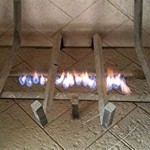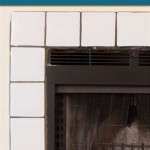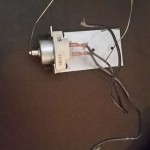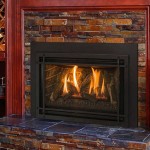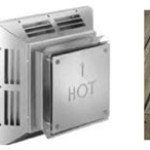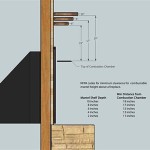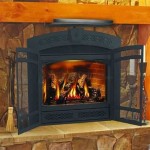What To Clean Brick Fireplace With: A Comprehensive Guide
A brick fireplace serves as a focal point in many homes, providing warmth and aesthetic appeal. However, consistent use leads to soot, ash, and creosote buildup, diminishing its beauty and potentially posing safety hazards. Maintaining a clean fireplace is crucial not only for aesthetics but also for ensuring proper functionality and minimizing the risk of chimney fires. This article provides a comprehensive overview of appropriate cleaning methods and materials for brick fireplaces.
The primary concerns when cleaning a brick fireplace revolve around removing soot and ash from the brick surface, as well as addressing creosote, a flammable byproduct of burning wood, which accumulates in the chimney and on the firebox walls. Different cleaning agents and techniques are appropriate for different levels of buildup and different parts of the fireplace. Neglecting regular cleaning can lead to stubborn stains and potentially require more aggressive cleaning methods, which might damage the brick.
Preparation and Safety Precautions
Before commencing any cleaning process, proper preparation is paramount. This involves gathering necessary supplies and implementing safety measures. First, protect the surrounding area by laying down drop cloths or plastic sheeting to prevent staining from cleaning solutions and dislodged soot. Eye protection, such as safety goggles, is essential to shield the eyes from airborne particles and chemical splashes. Similarly, wearing gloves protects the hands from harsh cleaning agents and potential irritants present in soot and ash. A dust mask or respirator is also advisable to prevent inhaling fine particles, especially when dealing with significant soot buildup.
Ensure the fireplace is completely cool before beginning. Hot embers or warm brick can pose a burn risk and potentially alter the chemical reactions of cleaning agents. Remove any remaining ash and debris from the firebox using a shovel and a sturdy container. This initial removal step significantly reduces the amount of cleaning required later. Empty the ash into a metal container and dispose of it responsibly, ensuring it is completely cooled to avoid potential fire hazards.
Ventilation is also crucial. Open windows and doors to allow for adequate airflow, minimizing the concentration of fumes from cleaning products. This is particularly important when using chemical cleaners. If possible, consider using a fan to circulate air and further improve ventilation. With these preparatory steps completed, the fireplace is ready for a thorough cleaning.
Effective Cleaning Solutions for Brick Fireplaces
Several cleaning solutions can be employed to effectively remove soot and grime from brick fireplaces. The choice of solution often depends on the severity of the staining and the user's preference for natural versus chemical products. One common and readily available option is a mixture of warm water and dish soap. This solution is effective for light to moderate soot buildup and is gentle enough to prevent damage to the brick. Apply the soapy water with a sponge or brush, scrubbing gently to loosen the soot. Rinse thoroughly with clean water and allow the brick to dry completely.
For more stubborn stains, a solution of trisodium phosphate (TSP) can be used. TSP is a powerful cleaning agent that effectively cuts through grease and soot. However, it is essential to exercise caution when using TSP, as it can be irritating to the skin and eyes. Always wear gloves and eye protection when handling TSP. Mix the TSP with water according to the manufacturer's instructions and apply it to the brick surface with a scrub brush. Allow the solution to dwell for a few minutes before scrubbing vigorously. Rinse thoroughly with clean water and ensure all traces of TSP are removed.
An alternative to TSP is a homemade solution of baking soda and water. Baking soda is a natural abrasive that can effectively remove soot and stains without the harsh chemicals found in commercial cleaners. Create a paste of baking soda and water and apply it to the brick surface. Let the paste sit for several minutes before scrubbing with a brush. Rinse well with clean water and repeat if necessary. This method is generally considered safer for both the user and the environment.
Another option is using commercially available fireplace cleaners specifically designed for brick and stone. These cleaners often contain a blend of surfactants and solvents formulated to dissolve soot and creosote. Always follow the manufacturer's instructions when using commercial cleaners. Test the cleaner on an inconspicuous area of the brick first to ensure it does not damage or discolor the surface.
Techniques for Cleaning Different Parts of the Fireplace
The cleaning techniques employed may vary depending on the specific part of the fireplace being cleaned. The firebox, the interior chamber where logs are burned, typically accumulates the most soot and creosote. For the firebox walls, use a stiff-bristled brush, such as a wire brush or a masonry brush, to scrub the brick surface. Apply the chosen cleaning solution liberally and scrub in a circular motion to loosen the soot. For hard-to-reach areas, consider using a smaller brush or a sponge attached to a handle. After scrubbing, rinse the walls thoroughly with clean water, using a sponge or a hose with a gentle spray nozzle.
The hearth, the area in front of the fireplace opening, is prone to staining from spilled ash and embers. Clean the hearth using a similar method as the firebox walls. Apply the chosen cleaning solution and scrub with a brush. Pay particular attention to areas with stubborn stains. For stone or tile hearths, use a cleaner specifically designed for those materials to avoid damage. Protect any surrounding flooring with drop cloths to prevent staining.
The chimney flue is another critical area to maintain. Creosote buildup in the chimney flue is a significant fire hazard and should be addressed regularly. While homeowners can attempt to clean the chimney flue themselves using specialized brushes and tools, it is often recommended to hire a professional chimney sweep. Professional chimney sweeps have the expertise and equipment to thoroughly clean the chimney and identify any potential problems, such as cracks or blockages. Regular chimney inspections are essential for ensuring safe and efficient fireplace operation.
Finally, after cleaning the brick, consider applying a brick sealant. This will help protect the brick from future staining and make it easier to clean in the future. Choose a sealant specifically designed for brick and follow the manufacturer's instructions for application. A sealant can prolong the life of the brick and maintain its aesthetic appeal.

How To Clean A Fireplace Diy Basics

How To Clean Brick Fireplaces Mantels Hearths And More My Space

How To Clean Fireplace Bricks 9 Steps With S Wikihow

How To Create An Exposed Brick Feature Wall Or Fireplace And Clean Maintain It Like Expert Manchester Evening News

Mortar Wash Brick Fireplace Makeover Dimples And Tangles

How To Clean Brick Fireplace Royal Stone Care

How To Clean A Sooty Fireplace With Household Items Brick House Cleaning Tips

How To Clean Fireplace Bricks 9 Steps With S Wikihow

How To Clean A Brick Fireplace The Family Handyman

Best Way To Clean A Fireplace Stacy Risenmay

